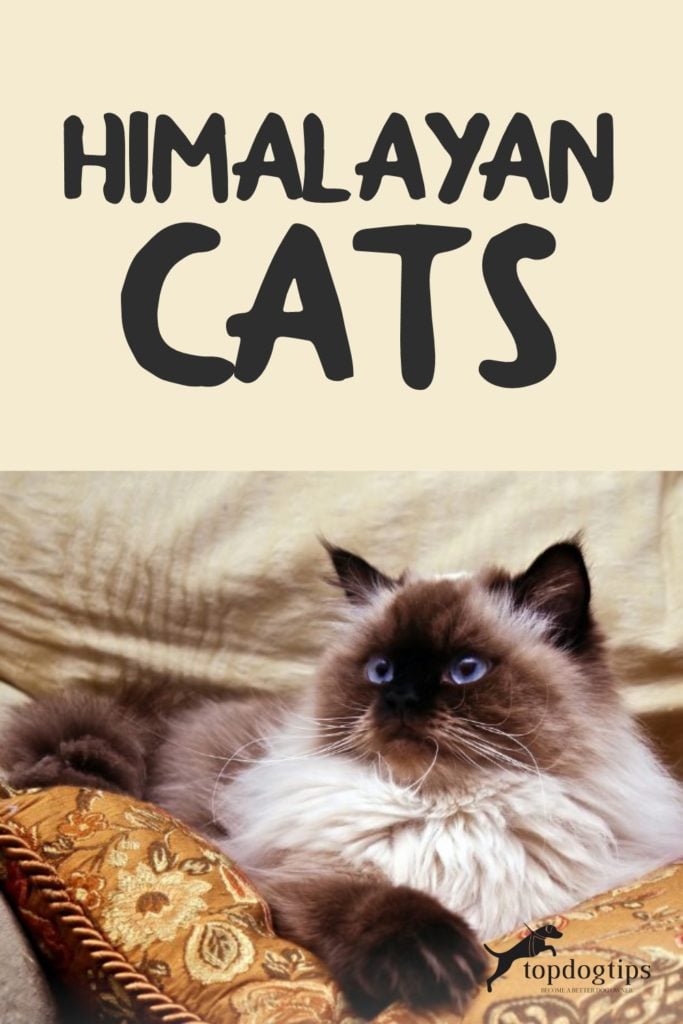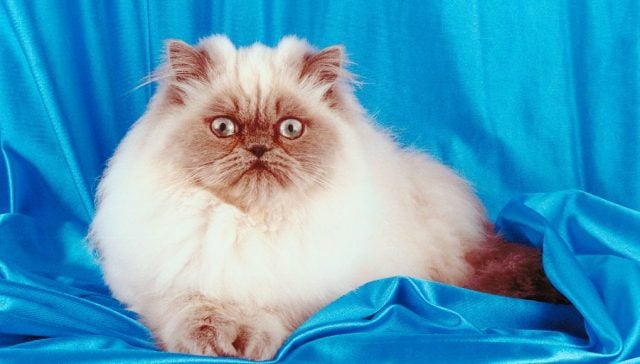
Table of Contents
- Himalayan Cat Breed Profile
- FAQs about Himalayan Cats
- Himalayan Cat Breed Profile: Before You Go…
Himalayan cats, also known as the Himmy, Himalayan Persian, or Colorpoint Persian, is the most pedigreed cat globally.
Along with the Colorpoint Shorthair and Javanese, these breeds are under the classification of Colorpoints by the World Cat Federation and Cat Fanciers’ Association.
However, other registries depict the Himalayan as a sub-breed of the Persian.
Aside from their charming appearance, Himalayan cats also have an affectionate temperament which makes people adore them.
The humble nature of this cat may even soften the people with the hardest of hearts.
Get to know more about this paw-tastic feline breed by reading the article below.

Himalayan Cat Breed Profile
The Himalayan Cats' History
The breed didn't make an appearance until 100 years ago.
Around the 1920s and the 1930s, breeders attempted to recreate a Persian cat with Siamese patterns by crossing the two said breeds.
However, the first true Himalayan cross came to life in 1931 by Virginia Cobb and Dr. Clyde Keeler at Harvard.
They didn't intend to create a new breed; they only studied how genetic characteristics pass from the parent to the offspring.
Nonetheless, they named the new cat “Newton's Debutante.”
After seeing the first few Himalayan offspring, British breeders from the United States decided to recreate them.
The breeder notable for creating the first Persian-bodied Himalayan cat after World War II was Marguerita Goforth in the 1950s.
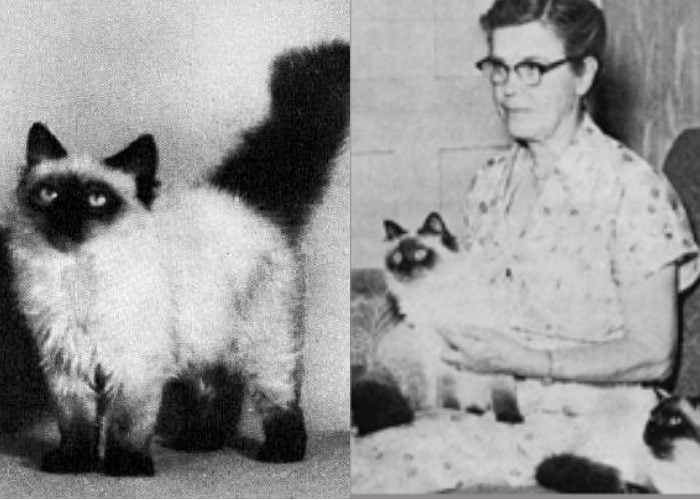
The term “Himalayan Cat” was coined by Goforth herself due to the similarity of the cat to the appearance of the Himalayan rabbit.
When the popularity of the Himalayan boomed, there were a few debates regarding its status as a breed.
Some argue that this is a breed of its own, while others claim that the Himmy is only a pattern of the Persian.
Since the breed is still relatively new, several tests are performed on them to determine their origins.
As a result, most experts classify the Himalayan breed as a subgroup of Persian patterned cats.
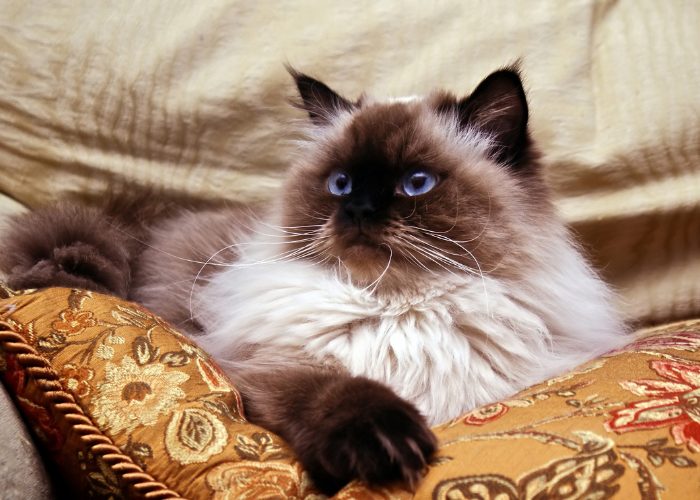
The Himalayan Cats' Appearance
The most recognizable trait that comes to mind if someone mentions a Himalayan cat is their flat face resembling a pug.
They sport a dark “mask” on their face and usually have dark points predominantly on their tails and paws.
Himalayan cats also have a sturdy and thick-bodied appearance; they are seemingly bulky because of their muscles, not their fat.
But depending on the qualities of their parent breeds, their bodies often range from medium to large, varying from seven to twelve pounds.
On the other hand, the Himalayan cat is a long-haired cat taken from the Persian gene.
These cats have a long overcoat, thick undercoat, and multiple color points, which earned their nickname for their color.
Himmies and other Asian breeds have color modifier genes upon birth, which determines the pigmentation of their body parts.
This is why they have dark points yet light body fur.
Their color points range from gray, blue, chocolate, lilac, seal, and cream—which are also points you can see in a Persian cat.
Furthermore, they also have striking patterns that the Siamese cat has, such as tortie, lynx, and tabby patterns.
A few color points are most notable in Himalayan cats, which makes them differ from other cat breeds.
But did you know that these are tabby points?
Himalayan cats have four distinct point categories: solid, tortie, cream, and lynx patterns.
These points are in recognition of the Cat Fanciers’ Association to determine the point patterns of this breed.
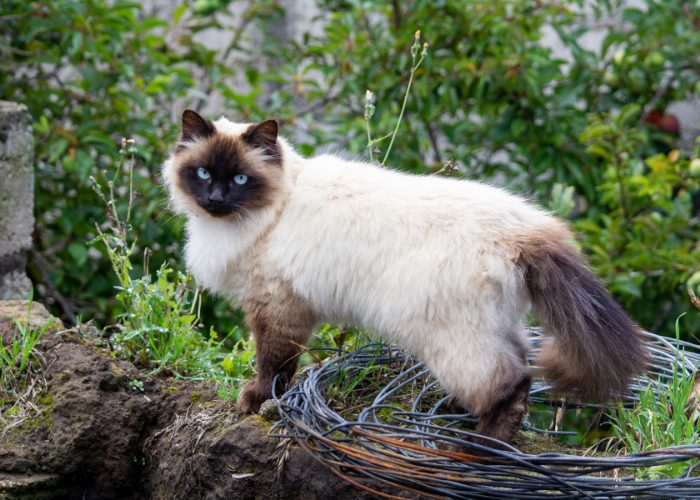
Here are the following color points widely recognized today:
Solid Himalayan Pattern
The solid points, or the Himalayan points, are the most common color points in the Himalayan cat breed.
This color point solidifies the gradient-like color between their body, paws, and tail. You can also see their “mask” on their face, which is also dark in color.
They come in ivory, cream, and fawn variations, and you’ll identify them quickly through the points of contrast on their fur.
Listed below are examples of solid patterns that you’d see in a Himalayan cat.
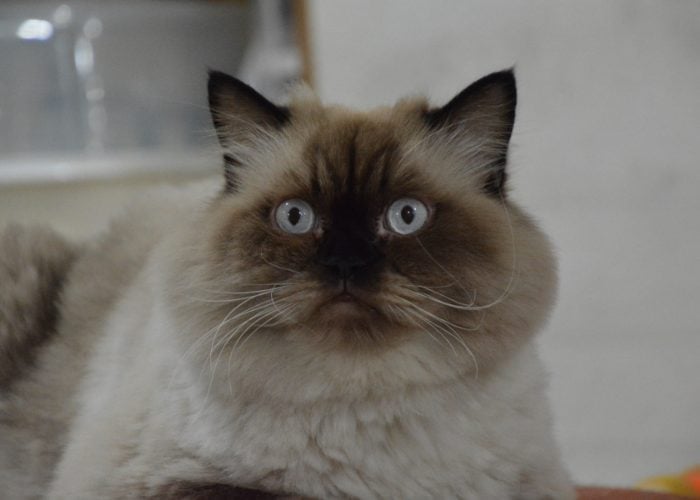
Chocolate Point Himalayan
This solid point is always ivory with chocolate colors on its paws and tails.
The masks on their faces also have the same color as their points.
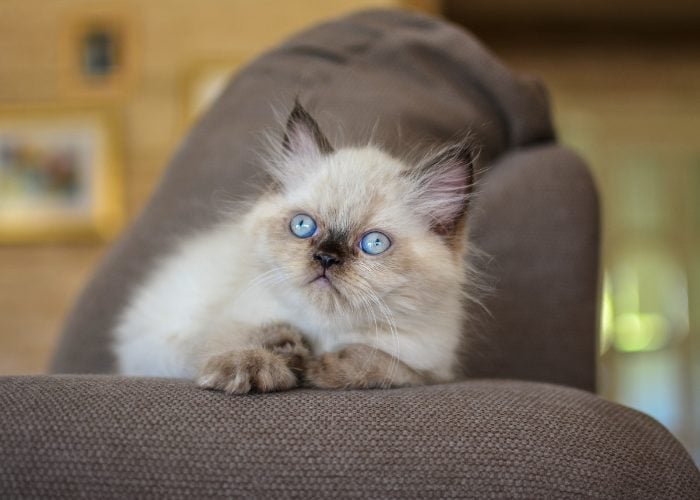
Seal Point Himalayan
They have seal brown solid points on their paws and tails and carry the same color on their masks.
Their colors vary from ivory to dirty cream hues.
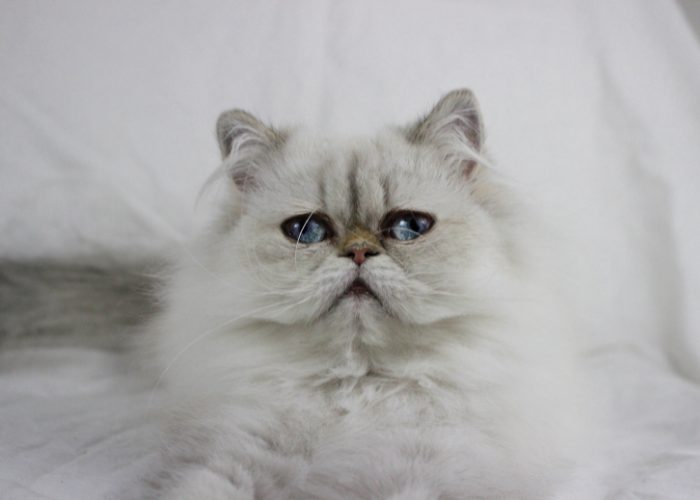
Lilac Point Himalayan
Did you know that this point is the rarest within the Persian breed standard?
The Lilac Point Himalayan is almost pure white all over, with faint blueish points on their paws and tails.
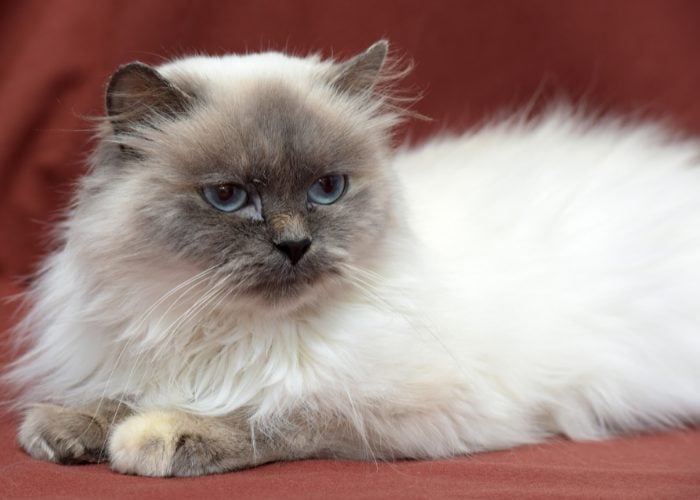
Blue Point Himalayan
Similar to the Lilac point, except for where their points are noticeably darker in color than the other.
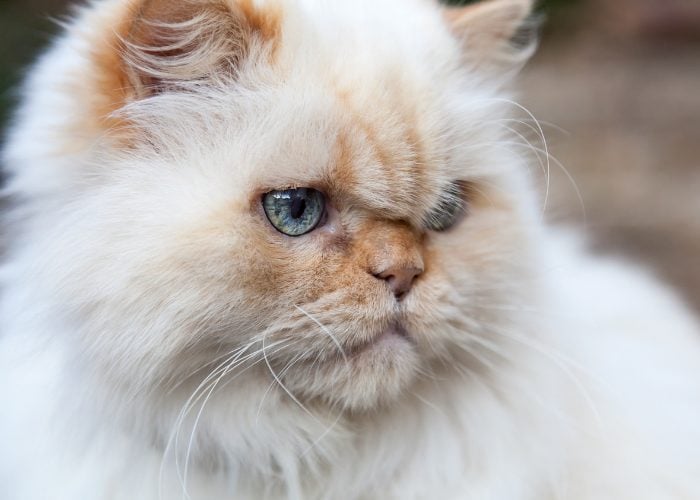
Flame Point Himalayan
They got the name of this point from the reddish pigments within their fur.
Flame point Himalayan cats have warm and reddish tones over their points, as well as their noses and paw pads.
Tortie Himalayan Pattern
The Tortie Point variant of Himalayan cats is another adorable color point variant that you might not want to miss.
Their colors can also vary from fawn to light pink, with stains of cream or red hues within their fur.
Their points are usually in any dark shade of brown with lines on them.
The colors of their noses and paw pads are either dark or coral pink, and their eyes are always blue.
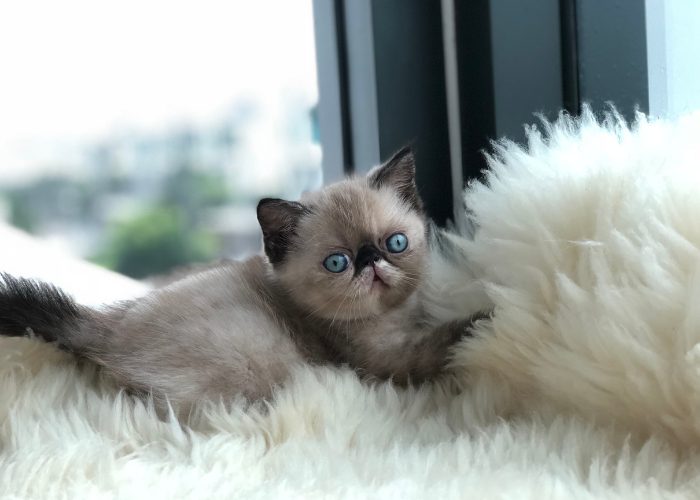
Chocolate Tortie Point Himalayan
Like the solid chocolate point, Chocolate Tortie Points are ivory; however, you can locate the point on their masks.
Cream Himalayan Cat Points
The cream point Himalayan cat generally looks like they dipped their fur in milk due to their milky white coat.
You can see variations of hot creams or flame-red hues within the fur coat of a cream point.
Their body fur is also lighter than the other point classifications mentioned.
Their points are only a shade darker than the rest of their body. They also have vibrant blue eyes that you might not just resist looking at.
The examples given below are of the Cream Point Himalayan sub-categories.
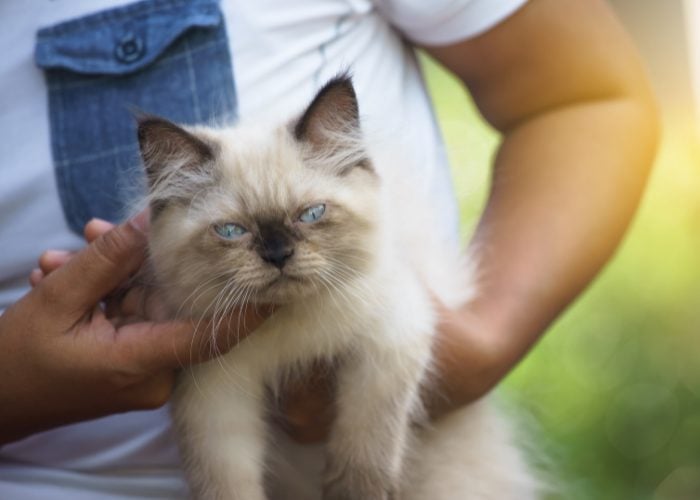
Blue Cream Point Himalayan
This beautiful cat point has a creamy white body fur with bluish undertones.
Their paw pads and noses are either pink or slate colors.
Lilac Cream Point Himalayan
Lilac Cream Points have darker purple undertones on their fur, like the cream point above.
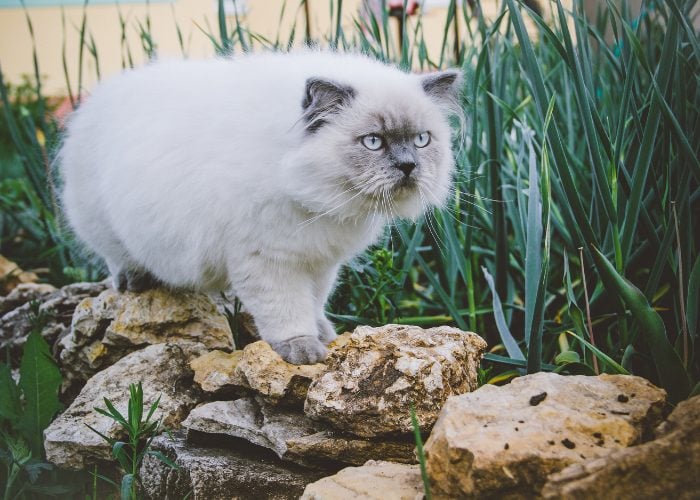
Lynx Himalayan Pattern
The lynx point is dominant, especially if the Siamese genes in the Himalayan cat are more dominant.
Himalayan cats with lynx points have dark and lined colored stripes on their ends instead of the solid Himalayan point.
The stripe patterns also appear on their faces, indicating that your Himalayan is truly a lynx point.
Here are examples of Lynx Himalayan patterns.
Seal Lynx Point Himalayan
This lynx point has a brindled wet brown color, also known as the seal color, and cream and ivory bodies.
They also have red or seal-colored noses and paw pads.
Blue Lynx Point Himalayan
The fur of this lynx point has a smooth, icy blue tone to it.
They also have brindled and darker tabby markings all over their points.
Flame Lynx Point Himalayan
The opposite of the Blue Lynx, Flame Lynx Point Himalayan, has brindled, warm, and reddish tabby markings on its points.
Their fur is often cream or ivory.
Cream Lynx Point Himalayan
Unlike the others, the points of this lynx point aren’t visible at first glance.
Their fur is white all over, with dark and creamy brindled tabby patterns on their ends.
Chocolate Lynx Point Himalayan
These kitties have ivory bodies with brindled milk chocolate points on their paws, tails, and masks on their faces.
Lilac Lynx Point Himalayan
Lilac Lynx Point Himalayan is similar to the Blue Lynx Point, except they are paler and more relaxed, with frosty white points and lilac markings.
They are more popular because of their rarity in Himalayan varieties.
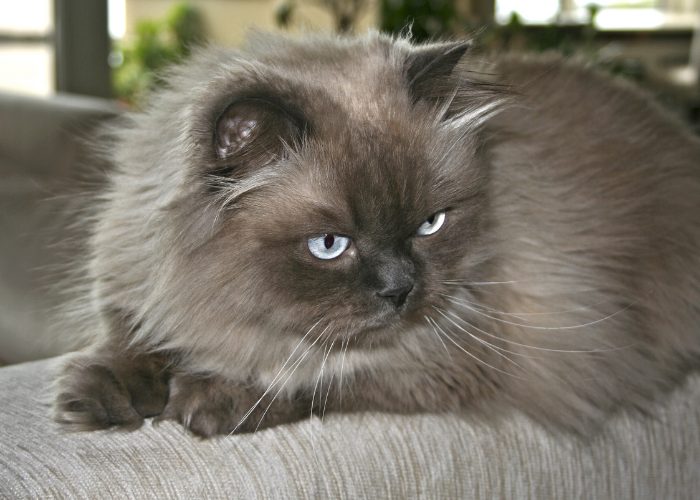
The Himalayan Cat Behavior and Temperament
A Himalayan cat is among the best-behaved and affectionate indoor feline companions.
They're naturally sweet, good-natured, intelligent, and very active in socializing and playing.
Since they combine the Persian and the Siamese cat breeds, they're inevitably similar personality-wise.
The Himalayan is generally more active and playful; thus, their admiration for physical contact and affection, such as receiving petting and grooming from their humans.
Furthermore, since they're extremely friendly and charming, they're the perfect companion for dogs and small children.
Himalayan cats can also show remarkable devotion to their humans, which you might find irresistible.
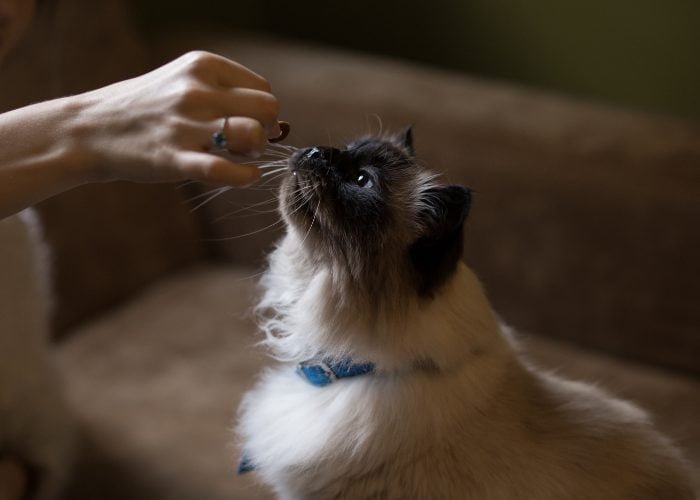
The Himalayan Cat’s Diet
A Himalayan's diet depends on their age, weight, and activity.
However, commercial cat foods rich in protein are a good choice for first-time cat owners.
There are also special diets that you could give to them if they experience vomiting furballs.
Nonetheless, it's an excellent time to ask your vet for pieces of advice about your cat's diet.
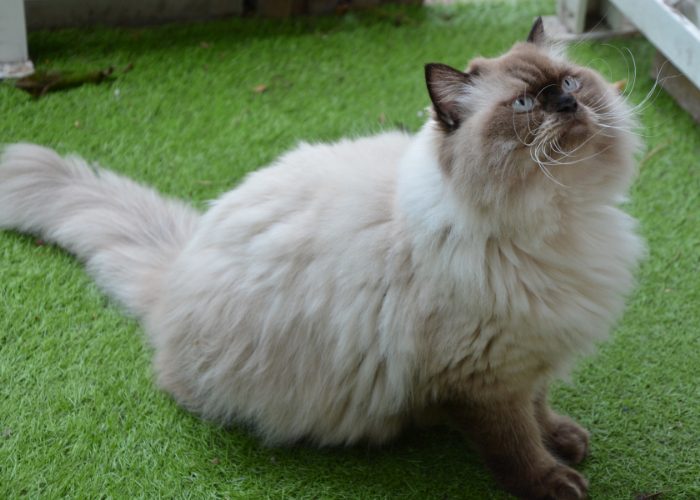
The Himalayan Cat’s Health and Issues
Himalayan cats are genetically susceptible to Polycystic kidney disease or PKD.
This condition causes cysts within their renal tubules and may be fatal if not treated early.
However, you may prevent this particular condition if you spay or neuter them.
Furthermore, Himalayan cats can also be sensitive to respiratory issues due to the flat shape of their noses and flattened faces.
Since this condition is inevitable, you must set and control your Himalayan's playtime hours.
On the other hand, with their long and furry coats, Himmies may also develop ringworms in their skin if not appropriately groomed.
To prevent this, make sure to check their skin every time you brush their fur.
In addition to the concerns of their thick coats, these cats are significantly at risk of developing seborrhea oleosa, which causes their skin to be red and itchy.
You may prevent seborrhea oleosa on your kitty by constantly checking and regularly grooming their fur coats.
These are the most common health issues that you may find in a Himmy, but they'll remain healthy with proper care.
Their lifespan, in turn, comes to around nine to fifteen years.
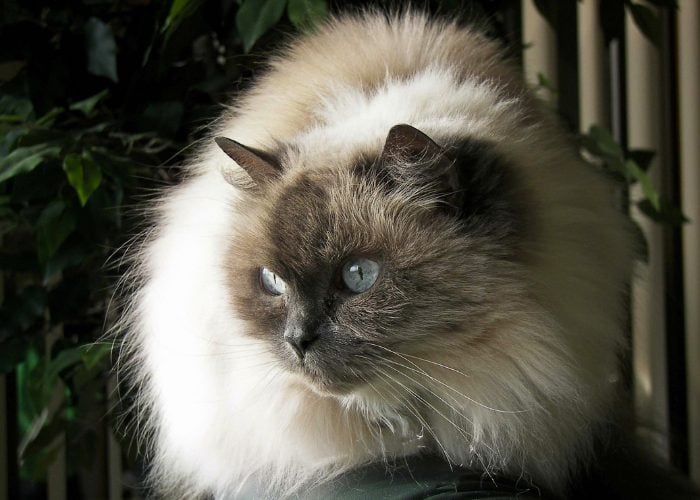
How to Groom Himalayan Cats
If you cannot spare time to groom a cat, this breed might not suit you. Dedication is key to grooming a Himalayan cat.
Like many long-haired cats, Himalayan cats need their hair brushed daily. Cat experts also recommend bathing them routinely to help reduce oiliness on their fur and skin.
Furthermore, Himalayan cats are prone to having watery eyes and eye boogers; thus, you must also wipe their eyes daily to avoid infection.
Pet supply stores have special wipes especially made for them.
Lastly, please remember to clean their ears, paws, and nails to avoid possible conditions or infections.
As much as possible, get your cat to a groomer for regular and safe grooming.
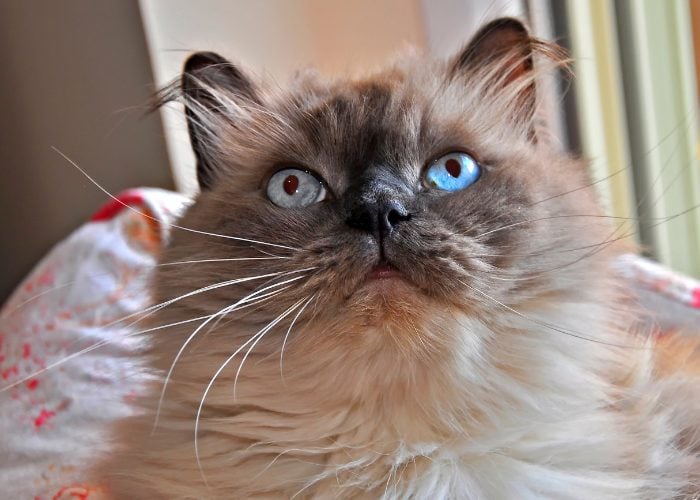
How To Train Himalayan Cats
Himalayan cats are intelligent, attentive, and active in recreational activities, so it is not hard to train them.
However, it would be best to teach your cat while they’re still young.
To start, you can utilize clicker training.
Clicker training introduces the concept of a reward system with every click.
The click itself rewards their diligence by giving your pet any form of treats.
You can use this method to teach your Himalayan with different sets of commands, like potty training.
For example, you may teach your cats to the pot by leading them toward their litter boxes using their favorite snack.
Every time they made it successfully, quickly click your clicker before giving them a treat.
Do this until your cat recognizes the scent on their litter box and understands that it’s the area where they’ll do their business.
On the other hand, you can also teach them how to do different tricks, like Sit, Come, or In the Box (or Cat Carrier), using clicker training.
These are only some of the many tricks and techniques that you may use to train your Himmy.
As they are an intelligent breed, they’ll learn many of your commands quickly.
FAQs about Himalayan Cats
How can I tell if my kitten is a Himalayan?
Himalayan kittens are known for their distinctive coloring and markings.
Here are some characteristics to look for to determine if your kitten is a Himalayan:
1. Coloring: Himalayan kittens have a colorpoint coat pattern, which means that their body is a lighter color than their face, legs, ears, and tail.
The color of their points can vary but is typically a darker shade of brown, blue, chocolate, or lilac.
2. Markings: Himalayan kittens have dark markings on their face, ears, legs, and tail. These markings are typically a darker shade of the same color as their points.
3. Eye color: Himalayan kittens have bright blue eyes, which may darken as they get older.
4. Body type: Himalayan kittens have a stocky, muscular build and a round face with a short, broad nose.
If your kitten has these characteristics, there is a good chance that they are a Himalayan.
However, it's important to note that not all cats with colorpoint coats are Himalayans and that other breeds, such as Siamese and Birman cats, can also have similar coloring and markings.
If you are unsure about your kitten's breed, it may be helpful to consult with a veterinarian or a professional cat breeder.
In the Himalayan cat breed, the rarest color is considered to be the chocolate point.
Chocolate Point Himalayans have a warm brown color on their points, ranging from light milk chocolate to dark chocolate brown.
The rarity of the chocolate point color is due to the fact that it is a recessive gene, which means that both parents must carry the gene in order for their offspring to have the chocolate point coloring.
As a result, chocolate point Himalayans are less common than other color variations such as seal point or blue point.
Are Himalayan cats clingy?
Himalayan cats are known for their affectionate and social nature, and they often enjoy spending time with their owners.
While every cat is unique, many Himalayans are considered to be clingy or velcro cats, meaning that they enjoy being close to their owners and may follow them around the house or seek out attention and affection.
Himalayans are also known for their calm and gentle temperament, which makes them well-suited for households with children or other pets.
However, it's important to note that every cat has their own personality and preferences, and some Himalayans may be more independent or less social than others.
It's important to spend time getting to know your cat and to provide them with the love, attention, and care that they need to thrive.
Do all Himalayans have blue eyes?
Yes, all Himalayan cats have blue eyes. The blue eye color is a defining characteristic of the breed and results from the same genetic mutation that causes the colorpoint coat pattern.
The blue eye color is typically bright and intense and may darken slightly as the cat ages.
While some other cat breeds, such as the Siamese, also have blue eyes, the blue eyes of Himalayan cats are distinct in their brightness and intensity.
It's important to note that if a Himalayan cat has any other eye color than blue, it may be due to a genetic mutation or a health issue and should be evaluated by a veterinarian.
Are Himalayan cats color-blind?
There is no evidence to suggest that Himalayan cats are color-blind.
Like other cats, Himalayans have the ability to see colors, although their color vision may not be as vivid or precise as that of humans.
Cats have fewer color-detecting cells in their eyes than humans do, which means that they may not be able to distinguish between certain colors or shades as well as humans can.
However, cats can still see a wide range of colors, and their vision is particularly well-suited for detecting movement and tracking prey.
While Himalayan cats may have some differences in their color vision compared to humans, they can still see and perceive the world around them in their own unique way.
Himalayan Cat Breed Profile: Before You Go…
Himalayan cats are probably one of the softest, sweetest cat breeds in the world.
They are lovely additions to your family as they can be a perfect acquaintance and companion for people of all ages.
Whether you're young or old, Himalayan cats adapt to any environment, may it be a small or large family. They're also warm and welcoming to any strangers they meet.
On the other hand, these cats are gentle, quiet, and sweet-tempered breeds.
You can even leave your Himmy alone in your home, and they'll just sit on the corner, cleaning their fur.
However, that doesn't mean that your Himalayan cats are not fond of playing. They still need to have their playtime hour to avoid abnormal hyperactivities.
Nonetheless, you have to make sure you did your research about the said breed.
Ask yourself questions such as: Do they fit in my lifestyle? What foods do they usually eat? Are they high-maintenance?
This way, you'll be able to know what are the dos and don'ts in taking care of this breed.
Related Articles:
- Maine Coon Cat Breed: A Purrific Overview
- Siamese Cat Breed: Characteristics, Grooming Tips and Interesting Facts
- The Ragdoll Cat Breed: An Overview
Want To Share This…


